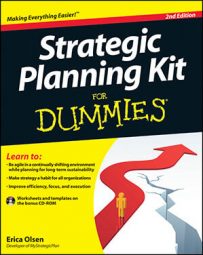In terms of strategic planning, the difference between your current assets (those you intend to convert to cash within a year) and your current liabilities (the obligations you have to pay within a year) is your liquidity.
Of primary importance to all organizations is the ability to pay their bills on time every month. Your liquidity is the safety net that protects you from a financial crisis. You need to look at the following two ratios:
Current ratio: The current ratio looks out over a 12-month time horizon and measures the cash available to meet current liabilities. The current ratio is determined by looking at your balance sheet and dividing current assets by current liabilities.
With $300,230 in current assets and $200,100 in current liabilities, the fictional Konas Corp’s current ratio is 1.5, which means that for every dollar of obligation due in the next 12 months, the company expects to have $1.50 to meet those obligations. You should shoot for a ratio of about 2.0.
Quick ratio: The quick ratio is a tighter test of your ability to pay your bills. It uses assets that convert to cash within 60 to 90 days rather than 12 months, typically involving only cash and current receivables.
Konas has $271,000 in cash and receivables. Dividing by $200,100 (current liabilities) yields a quick ratio of 1.35. For every dollar in obligations, the company has $1.35 in quick cash to meet them. You want your quick ratio to be higher than a 1.0.
Konas may be a little concerned because its current ratio is less than 2.0, but with a quick ratio exceeding 1.0, it has a reasonable cash position.

